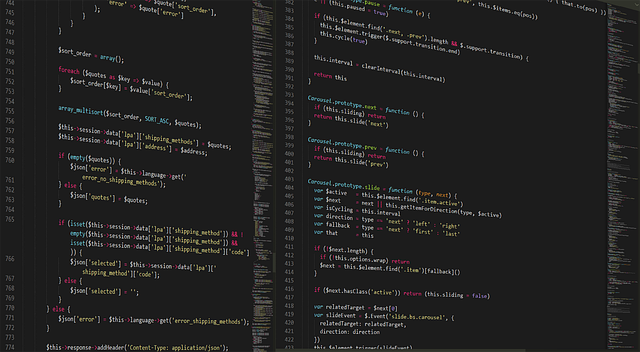Market Overview: The Numbers Behind the Noise
The crypto market didn’t stand still this past month. Total market cap saw a modest bump—up nearly 6%—as capital cautiously returned to majors like Bitcoin and Ethereum. Bitcoin managed to hold support above key psychological levels, partly thanks to renewed ETF buzz, while Ethereum gained ground on optimism around its next upgrade. That said, altcoins were a mixed bag. Solana and Chainlink posted double-digit gains, riding waves of improved sentiment and fresh integrations. Meanwhile, meme coins—once high flyers—slipped back into volatility-driven irrelevance.
Among top performers: Toncoin, fueled by Telegram ecosystem hype, and Injective, which gained traction among DeFi circles. On the laggard side, tokens tied to struggling DAO projects or low-volume NFT ecosystems took the biggest hits, reflecting a skittish market wary of overpromises.
Trading volume told a blunt story. While CEX activity picked up slightly, especially around volatility events, DEX volume remained flat—suggesting traders are still hesitant to rotate aggressively into riskier assets. Most volume spikes happened around macro news or surprise regulatory announcements, not organic growth. That’s not a sign of a fully bullish reversal—yet—but it does mean traders are watching closely and acting fast. Smart moves favored nimble strategies over blind conviction.
In short: the market’s waking up, but it’s not running yet. Position accordingly.
High-Impact News You Shouldn’t Miss
Regulators didn’t sit quietly this month. The SEC filed fresh enforcement actions targeting platforms that continue to dabble in what it calls unregistered securities, making it crystal clear that crypto’s gray areas are shrinking. Meanwhile, a key U.S. court ruling backed Ripple’s right to trade XRP on secondary markets—a partial win for the industry, even as global regulators tighten their stance. The EU inched closer to clarity with progress on its MiCA framework, while some Asian markets opted for stricter capital controls on crypto firms.
In exchange land, it’s been a shake-up. Binance delisted multiple tokens citing low liquidity and compliance risks. Kraken and Coinbase added new assets, betting on increased user demand ahead of protocol upgrades. One standout scare: a data breach attempt on a mid-sized Asian exchange prompted temporary trading halts—a stark reminder that security is a never-ending arms race.
On the tech front, innovation didn’t slow. Ethereum’s long-anticipated Dencun upgrade hit testnet, triggering speculation about gas fee reductions. Solana rolled out a new validator client to boost network performance, and smaller chains like Sui and Aptos released protocol enhancements aimed at scalability. It’s part of a broader trend: layer 1s retooling for resilience, not hype.
In short: regulation is maturing, exchanges are being scrutinized, and the tech is quietly evolving beneath the surface. Pay attention—this is the groundwork for the next run.
Institutional Moves: Quiet Giants Making Big Plays
The old guard is inching in—and it’s louder than it looks. Over the past month, hedge funds have been steadily increasing their crypto exposure, mostly through structured products and OTC trades that don’t light up the retail dashboards. It’s not dramatic, but it’s intentional. Names like Millennium and Point72 aren’t just testing the waters anymore—they’re pushing in with targeted capital and longer time horizons.
Big-name banks are shifting too. Goldman Sachs is quietly expanding its digital asset team, while JPMorgan keeps building tools that embed crypto data into traditional wealth pipelines. Not headline stuff, but real infrastructure work. The message: crypto’s not a sideshow—it’s becoming part of core strategy.
Meanwhile, ETF momentum is finally living up to the hype. With BlackRock and Fidelity’s crypto ETFs gaining traction and volume, institutional custody providers like Coinbase Prime and BitGo are scaling up to meet demand. These aren’t speculative retail flows anymore—this is pension money, endowment cash, serious bets on long-term viability.
Under the surface, the suits are moving in. And the market’s foundation is shifting because of it.
The Impact of Macroeconomics on Crypto
Inflation and interest rates continue to be the quiet puppeteers behind crypto market movements. When central banks hike rates, risk assets usually take a hit—and that includes crypto. It’s simple: higher interest rates make traditional assets like bonds more attractive, and people become more cautious with speculative plays. On the flip side, when rate hikes pause or reverse, we usually see a surge in liquidity—and crypto tends to catch some of that wave.
Investor sentiment right now is a mix of cautious optimism and whiplash fatigue. Global inflation isn’t uniform; hotspots like Argentina and Turkey are dealing with currency devaluation, which ironically pushes more people toward crypto as a hedge. In these regions, Bitcoin isn’t a moonshot gamble—it’s digital exit strategy.
Traditional currencies under pressure are spotlighting crypto’s original sales pitch: freedom from centralized monetary systems. This isn’t just ideological anymore—it’s real. Even modest capital flight from struggling economies has caused localized BTC and stablecoin premiums on some exchanges. The dollar isn’t immune either. If global faith in fiat slips further, expect crypto adoption to follow—not in hype cycles, but as a survival tool.
For a more detailed breakdown of macro pressures and how they’re influencing crypto, check the deeper analysis: How Global Events Are Influencing Crypto Prices.
Web3, DeFi, and NFT Landscape
The Web3 engine didn’t slow down this month—it just changed gears. Several new protocols gained traction, especially in the intent-centric DeFi space. Notably, CatalystFi and ZerveX launched with real buzz, offering streamlined liquidity routing and undercollateralized lending models, respectively. Meanwhile, existing players like Arbitrum and Base saw increased developer activity, signaling a maturing L2 infrastructure more aligned with real-world use cases than hype cycles.
DeFi’s total value locked (TVL) shifted—but not drastically. There were modest inflows in blue-chip protocols, largely fueled by short-term yield spikes and narrative-driven momentum (looking at you, EigenLayer spin-offs). Still, the ecosystem feels cautious. Money’s moving, but it’s smarter and more selective than six months ago.
Over on the NFT front, things are less optimistic. Sales volume continues dragging, with blue-chips like Azuki and Pudgy Penguins treading water. The lull isn’t quite over—more like a recalibration. On the flip side, low-mint, art-forward collections on platforms like Foundation and Fxhash are seeing niche interest. This suggests a pivot from speculation to curation.
DAO governance is still clunky—but some groups are making moves worth tracking. MakerDAO approved a slight realignment of its RWA strategy, while Uniswap voters battled over fee switch implementation. The big takeaway? Governance that actually impacts token value is finally being noticed again. Slow progress, but progress.
Web3 this month was less fireworks, more groundwork. And that’s not a bad thing.
Security and Scandals
Crypto’s still the wild west in many ways—but 2024 is proving the sheriffs are finally showing up.
This past month saw a couple of high-profile breaches. One DeFi protocol lost nearly $40 million to a flash loan exploit, while a major centralized exchange halted withdrawals after an internal wallet compromise. Response times have improved—some platforms now freeze transactions automatically within seconds of suspicious activity—but the damage often hits before mitigation can kick in.
Rug pulls continue to muddy the waters, especially among smaller NFT and meme coin projects. The usual signs are still there: anonymous teams, vague roadmaps, inflated promises. If it feels rushed and the hype train’s moving too fast, that’s your cue to step back. Scams are no longer just technical; they’re social.
The difference in 2024: platforms and tools are finally being built with user protection in mind. Some exchanges are offering real-time asset monitoring and early scam detection alerts. Smart contract audits are becoming standard instead of optional. And regulators are pressuring developers to bake in security from the ground up. It’s early, but the signal is clear—user trust matters now, more than ever.
What to Watch Next
The coming weeks are laced with events that could shake charts and shift sentiment. On the tech side, keep eyes on protocol upgrades like Ethereum’s expected scalability jump with the Cancun-Deneb hard fork. Also on the radar: Cardano’s Chang upgrade, which pushes the platform deeper into decentralized governance. These are not minor rollouts—they could affect transaction speed, fees, and even chain stability.
Several new Layer 2s are making moves too. Blast and Starknet are surfacing with updates aimed at reducing friction and scaling faster. For builders and investors alike, these aren’t just updates—they’re signals on where adoption might gather next.
Regulatory-wise, heavyweight rulings are on deck. The crypto world is eyeing the SEC’s final stance on ETH ETFs, along with Europe’s rollout timeline for MiCA enforcement. Both could carve new paths—or walls—depending on the tone regulators take.
For market signals, track stablecoin flows and Bitcoin dominance levels. If BTC continues to lose share while stablecoin inflows rise, it’s often a sign traders are waiting for clearer skies before rotating into altcoins. Also: watch wallet activity on-chain. Whales moving to cold storage? Quiet accumulation often precedes loud breakouts.
Bottom line—don’t get caught flat-footed. The noise is constant, but the signals are there. Your job is to know what’s noise and what’s the gunshot at the starting line.
Final Take
It’s tempting to focus only on crypto prices—green candles and red dips get the most attention. But in 2024, surface-level watching won’t cut it. The real story is the ecosystem: how projects mature, how the tech evolves, how laws shift, and how users actually adopt what’s being built. Value isn’t just measured in tokens anymore. It’s in utility, community, and longevity.
The space moves fast, but that doesn’t mean you have to chase every headline. Stay critical. Dig deeper. Keep learning. Whether you’re holding, trading, or building, your best edge isn’t a magic coin pick—it’s context. Ignore the noise, watch the connections, and you’ll find the signal that matters.


 Melissa Rooneyesters has been instrumental in the growth of Factor Crypto Edge through her dedication to editorial quality and community engagement. By refining content and fostering meaningful connections with readers, she has helped strengthen the platform’s reputation as a go-to hub for crypto enthusiasts and professionals alike.
Melissa Rooneyesters has been instrumental in the growth of Factor Crypto Edge through her dedication to editorial quality and community engagement. By refining content and fostering meaningful connections with readers, she has helped strengthen the platform’s reputation as a go-to hub for crypto enthusiasts and professionals alike.